It can be passed off as “tradition,” but how can anyone possibly get motivated or excited by this? More importantly, how is this appropriate for young children?
You might say, “Oh, but everyone in the program does this. It makes for an organized, predictable, and season-focused year!”
These are dangerous statements. Just because “everyone’s doing it” doesn’t make it acceptable (OK, I sound like your mother here!). “Organized” and “predictable” are just shorthand for “lack of creativity” and “stale.” And, when did “season-focused” become a substitute for “child-focused”?
Let’s step away from that file cabinet for a moment and think about how to decide on topics and create really good lesson plans that matter to children.
Too often, planning activities are done backwards. The teacher finds a cute or fun activity on the Internet, from a friend, or at a workshop, and then figures out how her group of children will use it and what they will learn.
Don’t be that teacher!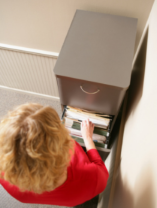
Instead, start out by focusing on something you should be doing every day: observing and listening. Paying attention and taking good notes on what children are doing and saying will provide insight into their interests, developmental needs, and what they have a burning desire to learn about.
For example, let’s say you’ve noticed that ever since Marcus brought in his Hot Wheels collection for Show & Tell, the children have been talking non-stop about cars and trucks and just about anything with wheels.
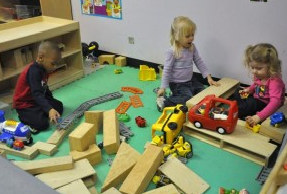 There’s been a new interest in making ramps out of unit blocks and making things roll with wooden cylinders. Yesterday, chairs were lined up and the children assigned themselves roles such as bus driver and passengers.
There’s been a new interest in making ramps out of unit blocks and making things roll with wooden cylinders. Yesterday, chairs were lined up and the children assigned themselves roles such as bus driver and passengers.
Then, several children decided they needed money to pay the bus driver. They got paper and scissors and cut out “dollar bills.” You noticed the differences in cutting ability among the children. Some cut out the shapes effortlessly, while others struggled—some even had trouble just properly gripping the scissors.
Do you recognize the potential of these teachable moments?
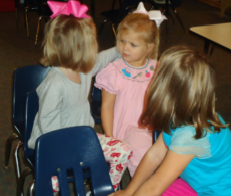 Were these activities simply passed off as random play or “just what kids do when left to their own devices”? Maybe you stepped in and redirected them back to the art table for the leaf rubbing activity you had set up and reminded them that “we don’t move chairs away from the table where they belong.”
Were these activities simply passed off as random play or “just what kids do when left to their own devices”? Maybe you stepped in and redirected them back to the art table for the leaf rubbing activity you had set up and reminded them that “we don’t move chairs away from the table where they belong.”
What could you do with this information?
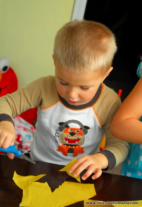 From just a few minutes of observing, some interests and ability differences have emerged. This is the place to begin thinking about the individual children in your group. What areas of development do you want to target? If your state has Pre-K learning guidelines, foundations, or standards, which ones would you use?
From just a few minutes of observing, some interests and ability differences have emerged. This is the place to begin thinking about the individual children in your group. What areas of development do you want to target? If your state has Pre-K learning guidelines, foundations, or standards, which ones would you use?
Now, formulate some goals and behavioral objectives. Based on the children’s interests and ability levels, what would you like them to learn or be able to do? Think about how you might be able to determine if they were successful. Be sure the behavioral objectives are specific and observable (“child can cut on a straight line using a proper scissor grip without assistance”), not vague or subjective (“child enjoys cutting and can cut a piece of paper”).
Next, brainstorm a number of activities that would become the vehicle for these goals and objectives. Try to be as open-ended as possible—think “project approach”. You might gather the children together and let them flesh out some of your preliminary ideas. Agree on the starting point for an activity, but leave it open to changing, shifting, and metamorphosis as the children get into it.
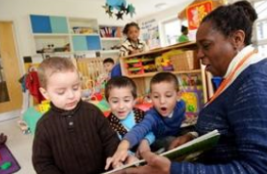
Create a list of materials needed to get started. Again, focus on open-ended, child-directed items. Often, the best materials are recycled and repurposed. A variety of cardboard boxes can become just about anything for children. Provide them with lots of items they can use to “accessorize,” decorate, and personalize. Preschoolers, especially, will totally engage in this process. They are just now learning about all the possibilities that symbolic representation has to offer.
Give them a box of paper towel tubes, popsicle sticks, bubble wrap, excelsior, straws, paper (different textures, sizes, weights, and colors), fabric scraps, pipe cleaners, paper plates, coffee filters, feathers, tape, glue, and possibly so much more! Their imaginations will take off.
Don’t forget to add literacy items, like chubby pencils, markers, and spiral notebooks, so they can “write stuff down,” make lists, treasure maps, or signage.
Be sure to choose an area in the room where the children have plenty of room to work on the activity, but can stop for the day and it will wait for them until tomorrow, like a favorite playmate. Get them started and then just stand back. Be prepared to document all that happens and to be amazed at the learning that takes place in every domain.
As you observe, you’ll be able to see if and how goals and objectives are being met and where you need to take them next. Those subsequent lesson plans will practically write themselves and there won’t be any need to visit that file cabinet.
The children may very well want to explore something about Fall this year, but it will be driven by their own ideas, interests, and abilities. Don’t limit them to rubbing leaves, when they can construct a life-size tree in your room!
Childhood only happens once. Children deserve a teacher who provides the tools, time, and support for exploration and learning: a teacher who trusts them to take an idea and make it their own.


 There’s been a new interest in making ramps out of unit blocks and making things roll with wooden cylinders. Yesterday, chairs were lined up and the children assigned themselves roles such as bus driver and passengers.
There’s been a new interest in making ramps out of unit blocks and making things roll with wooden cylinders. Yesterday, chairs were lined up and the children assigned themselves roles such as bus driver and passengers. Were these activities simply passed off as random play or “just what kids do when left to their own devices”? Maybe you stepped in and redirected them back to the art table for the leaf rubbing activity you had set up and reminded them that “we don’t move chairs away from the table where they belong.”
Were these activities simply passed off as random play or “just what kids do when left to their own devices”? Maybe you stepped in and redirected them back to the art table for the leaf rubbing activity you had set up and reminded them that “we don’t move chairs away from the table where they belong.” From just a few minutes of observing, some interests and ability differences have emerged. This is the place to begin thinking about the individual children in your group. What areas of development do you want to target? If your state has Pre-K learning guidelines, foundations, or standards, which ones would you use?
From just a few minutes of observing, some interests and ability differences have emerged. This is the place to begin thinking about the individual children in your group. What areas of development do you want to target? If your state has Pre-K learning guidelines, foundations, or standards, which ones would you use?